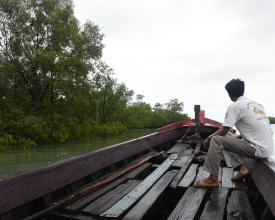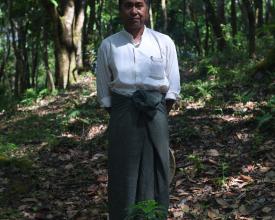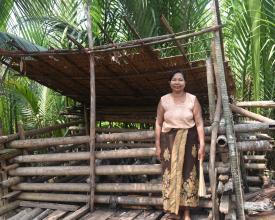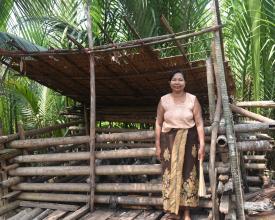
Enhancing NGO capacity on community-based conservation and development in Myanmar
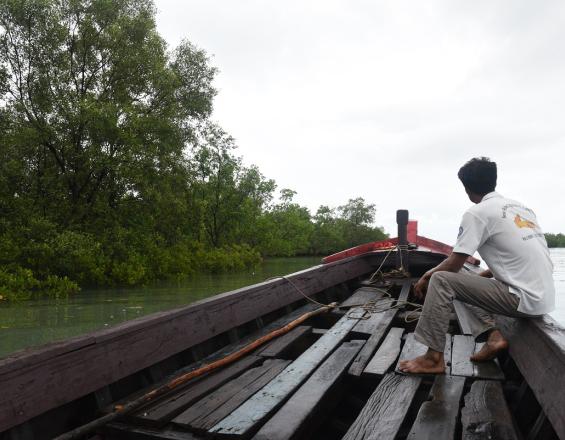
The Community Conservation Concession Agreement (CCCA) is an innovative approach to conservation which gives different stakeholders environmental protection rights and limited development rights within protected areas. It involves communities in conservation efforts while supporting their livelihoods. In 2016, the CCCA model was introduced in Myanmar by the Global Environmental Institute through four local NGOs. Sixteen projects were conducted and over 4,000 hectares of land were conserved.
As a key strategy to sustain gains and increase the impact of CCCA model, in 2017 this project was implemented to enhance the capacity of groups and organizations in Myanmar on CCCA and community-based conservation and development. With the support of CEPF, GEI conducted a series of trainings on CCCA implementation. It built a platform for local NGOs to collaborate with government agencies, to network with international donors, and conducted a series of trainings on CCCA implementation.
Contexto
Défis à relever
In contrast to the country's biological richness, at least a third of the local population currently lives below the poverty line and depends on natural resources for their livelihoods. Since 2010, Myanmar has lost approximately 546,000 hectares of forest annually, which means almost 2% of the country’s forest cover has been lost each year.
While the timber trade and agricultural reclamation contribute to deforestation in Myanmar, illegal logging for wood fuel collection by villagers also occurs at a critical rate. Rural villages, which comprise a majority of the population, consume approximately 1.8 million cubic tons of firewood each year.
The problem is bigger than what local NGOs can cope with. Myanmar’s NGOs were not fully equipped to manage conservation strategies, engage with international parties, as well as learn, share and implement innovative protection practices such as the CCCA model.
Ubicación
Procesar
Summary of the process
The first building block aims to address the challenge of how local NGOs had relatively low capacity for managing conservation strategies, engaging with international parties, as well as learning, sharing and implementing innovative conservation practices such as the CCCA model. After capacity enhancement, the second building block can effectively address the challenge wherein local communities are dependent on natural resources, and the need for innovative conservation models.
Building Blocks
Enhancing local NGO capacity in implementing an innovative conservation model
The CCCA model is still new in Myanmar and it is important to help local NGOs to understand and accept that conservation needs local community participation, and that they need to receive benefits from conservation actions. GEI conducted two trainings focusing on the CCCA model and its implementation and invited international experts who had extensive experience in community-based conservation, to share knowledge and experience. GEI also supported a local NGO for on-site implementation, providing consultation and connection to different donors.
Enabling factors
Local NGO trust and support and their willingness to accept CCCA model are key factors for success.
Lesson learned
The effectiveness of the trainings and building feedback/communication mechanisms are critical. Even though the local partner NGOs have already done a very good job of implementing \ projects and creating positive outcomes, some key factors of the CCCA model, such as penalty and data collection, were still missing in the projects. More effective training sessions and more comprehensive communication mechanisms between GEI and local NGOs could help improve it.
Promote the CCCA model to engage communities in conservation and to develop sustainable livelihoods
The demonstration of the CCCA model in pilot communities could show the Myanmar government what impact can be made if communities are involved in conservation actions and if benefits are provided for these actions. Supported by CEPF, GEI and four local NGO partners expanded the project communities to 27, conserving two more critical ecosystems: Inle Lake and Moeyingyi Wetlands. The total area conserved by the communities increased to almost 17,000 hectares. There was also an increase in participating households, from 4,565 to 21,615 people.
Enabling factors
Good relationships with diverse stakeholders, such as central and local governments, local communities and local NGOs enabled the success of this building block.
Lesson learned
The projects showed positive engagement with communities. Even though some communities lacked motivation and there were difficulties in communicating with them, the implementing NGOs exerted much effort to discuss projects with local people and to show that they respected community needs and willingness. However, the projects have had less success in engaging government agencies and companies. As important stakeholders, they were not identified through the initial stakeholder analysis process and did not share the same level of understanding of the CCCA projects with NGOs and communities. Their engagement and participation need to be considered in future projects.
Impacts
Through capacity enhancement, the collaboration between GEI and local NGOs brought positive impacts to Myanmar communities. The project:
- contributed to the conservation of more land and ecosystems by communities. The conservation area protected by communities within these projects expanded to 16.5 hectares;
- showed that most of the threats to national parks can be addressed by conservation action;
- showed local communities have a good awareness of environmental issues, especially about deforestation and climate change. This demonstrated positive outcomes from awareness raising trainings from both NGOs and local forest departments;
- The Biodiversity and Protected Area Law, as passed in 2018 recognized “Community Protected Areas” as an official category of protected areas;
- demonstrated positive social and economic impacts. Overall, 22 community funds were established to support sustainable livelihoods, with a capital of USD59,318.58; and
- increased annual the household income by 17%.
Beneficiaries
The beneficiaries are local NGOs, CSOs and other organizations, protected area managers, the local forest department and police department, as well as local communities.
Sustainable Development Goals
Story
In 2015, GEI, in collaboration with the government of Myanmar and Spring Foundation, conducted a pilot project in Thanbyar Khone (TBK) village along the Yangon-Naypyidaw highway. After understanding the community’s needs, through dialogue and research, GEI donated clean cookstoves, household solar-powered lighting systems as well as a solar-powered water pump to TBK and provided assistance in establishing a firewood plantation and community fund, with usage fees paid by local residents.
Based on the success of TBK pilot project, in 2016, GEI officially introduced the CCCA model to Myanmar in collaboration with four local NGOs. The aim was to engage local communities in conservation work in exchange for sustainable development support such as livelihood training, renewable energy goods, and the establishment of a community fund. Meanwhile, GEI also worked on enhancing the capacity of local NGOs to implement and manage CCCA projects.
GEI collaborated with Myanmar Forest Association (MFA) to implement CCCA in other areas. The selected site was Palaw township in the Tanintharyi Region, and the focus was mangrove forest conservation. Seven villages in two islands were chosen for the CCCA model. Each community formed a Village Development Committee (VDC) to conduct conservation activities listed in signed 5-year agreements. Meanwhile, MFA also conducted training on sustainable livelihoods such as eco-husbandry, organic fruit farming and sustainable fishing, and established a community fund to support the development of these livelihoods.
To enhance MFA’s capacity for project management and connection with other groups working on community-based conservation, GEI conducted several workshops. Together with government officials, local and international NGOs and other stakeholders, these aimed to build knowledge, share lessons-learned and build communication. MFA was also able to establish a field office in Kanti village with dedicated project staff.
MFA’s project has so far conserved 840 hectares of mangrove forest in the Myeik Archipelago (a Key Biodiversity Area), and helped protect two critically endangered mangrove species: Bruguiera hainesii and Sonneratia caseolaris. They also replanted over 37,000 mangrove stocks in gaps in the forests. Villagers actively attended trainings, and two community funds were established with a capital of USD 3767.17.
